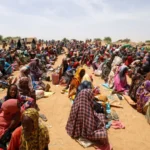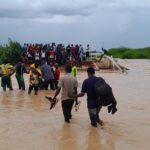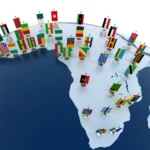Conflict and violence remain significant challenges in Africa, driving large-scale displacement and creating deep humanitarian crises. The continent has seen a rise in armed conflicts, civil wars, and inter-communal violence, leading to millions of people being forced to flee their homes. This article explores the multifaceted nature of conflict in Africa, its impact on displacement, and potential pathways to peace and recovery.
Understanding the Context of Conflict
Historical Background
The roots of conflict in many African countries can be traced back to colonial legacies, ethnic tensions, and struggles over resources. Post-independence, many nations faced challenges in nation-building, exacerbated by political corruption, economic instability, and social inequality. These historical grievances often resurface in times of crisis, leading to violence.
Current Hotspots
Conflict zones in Africa include South Sudan, the Democratic Republic of the Congo (DRC), Ethiopia, and the Central African Republic. Each of these regions has unique triggers for violence, but common themes include competition for resources, ethnic divisions, and the struggle for political power.
As noted by the United Nations High Commissioner for Refugees (UNHCR), “Conflict is the primary cause of forced displacement, accounting for about 70% of all people who have been uprooted from their homes” .
Impact on Displacement
Scale of Displacement
The scale of displacement due to conflict in Africa is staggering. According to the UNHCR, as of 2023, there are over 25 million refugees and internally displaced persons (IDPs) in Africa alone, many of whom have fled conflict zones. For example, the ongoing civil war in South Sudan has resulted in more than 4 million people being displaced, both internally and across borders.
Humanitarian Consequences
Displaced communities often face dire humanitarian conditions. Refugees and IDPs are frequently deprived of basic needs such as food, shelter, and healthcare. The lack of access to services can lead to malnutrition, disease outbreaks, and psychological trauma. “Displacement is not just a physical journey but an emotional and psychological one, often resulting in long-term mental health issues,” emphasizes a humanitarian worker in the field .
Social Dynamics
Conflict-induced displacement disrupts social structures and community networks. The sudden influx of displaced populations into host communities can create tensions, competition for resources, and xenophobia. This social fragmentation can hinder recovery efforts and perpetuate cycles of violence.
The Role of International and Local Actors
Humanitarian Aid and Support
International organizations, including the UN and various NGOs, play critical roles in providing humanitarian assistance to displaced populations. However, access to affected areas can be challenging due to ongoing violence and insecurity. “Humanitarian actors must navigate complex security environments to deliver aid, often putting their own lives at risk,” states a report from the International Committee of the Red Cross (ICRC) .
Peacebuilding Initiatives
Long-term solutions to conflict-related displacement require sustained peacebuilding efforts. Local peace initiatives that involve community leaders, women, and youth can foster dialogue and reconciliation. Successful examples include grassroots peace committees in conflict-prone areas, which work to mediate disputes and promote understanding among different groups.
Policy Recommendations
Governments and international bodies must prioritize conflict resolution and prevention strategies. This includes addressing the root causes of conflict, such as poverty, inequality, and political exclusion. Furthermore, strengthening legal frameworks to protect the rights of displaced persons is essential for ensuring their safety and dignity.
Conclusion
Conflict and violence are primary drivers of displacement in Africa, creating profound humanitarian challenges and destabilizing communities. Addressing these issues requires a multifaceted approach that combines immediate humanitarian assistance with long-term peacebuilding and development strategies. By fostering dialogue, promoting inclusive governance, and addressing the underlying grievances that fuel conflict, it is possible to create a more stable and resilient future for the continent.





